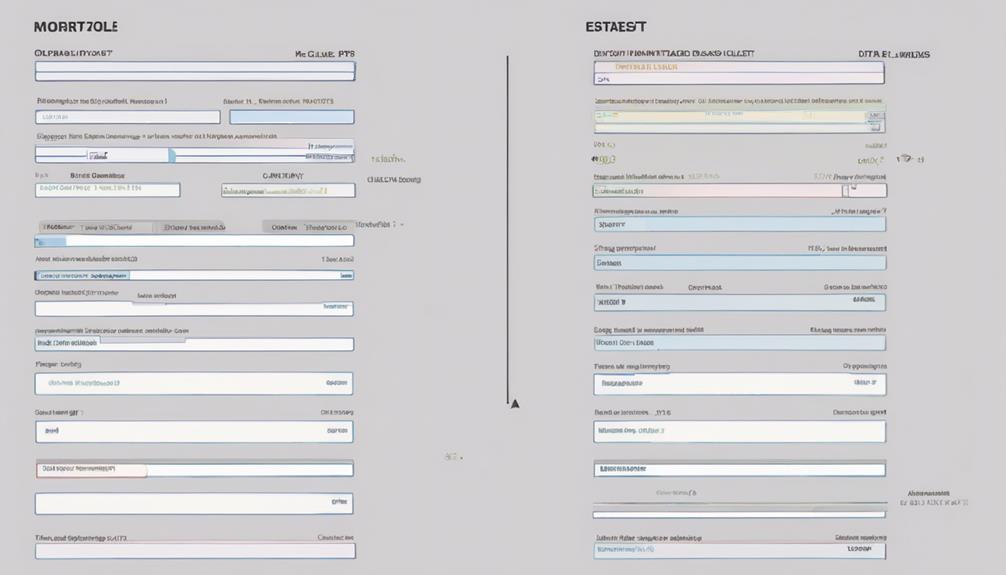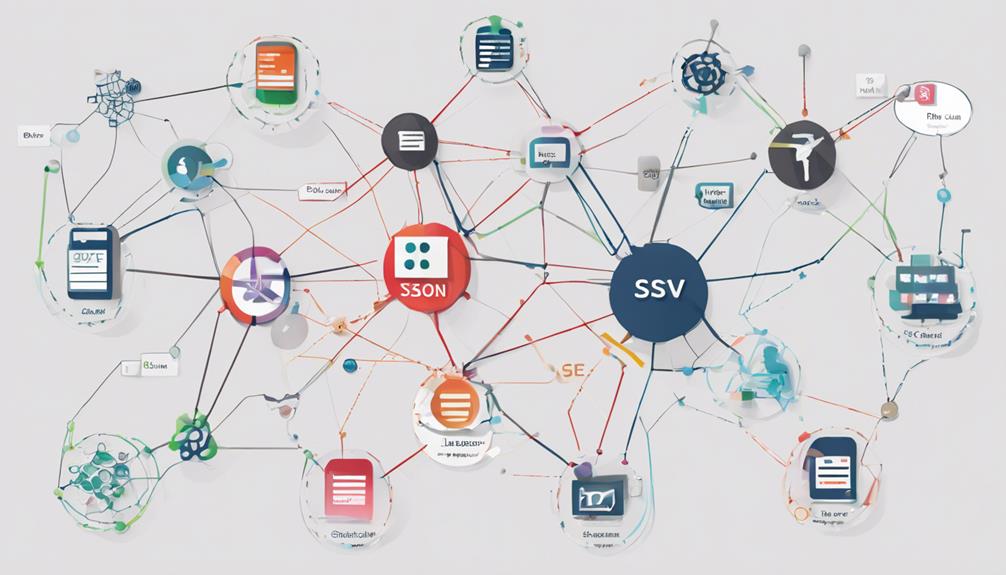When it comes to the process of database data formatting, you’ll find it involves a series of meticulous steps that are vital for maintaining data accuracy and consistency. From the initial data collection to the final validation stage, each phase plays a crucial role in shaping the database’s integrity. As you dive into the intricacies of data cleaning, transformation, and validation, you’ll discover the key techniques used to ensure that your database operates seamlessly and efficiently. The journey through database data formatting is undoubtedly an intriguing one, filled with essential insights waiting to be unraveled.
Data Collection
When collecting data for your database, your approach must be systematic and thorough. Data aggregation involves gathering information from various sources, while data extraction focuses on pulling out specific data points for analysis. It is essential to employ efficient data filtering techniques to ensure that only relevant data is included in your database. This process aids in maintaining the integrity and accuracy of your database.
Data organization is a critical step in data collection. Categorizing and structuring the collected data in a logical manner facilitates easy retrieval and analysis. Proper organization also enables quick identification of trends and patterns within the data.
To excel in data collection, establish clear guidelines for data aggregation and extraction, implement robust data filtering mechanisms, and maintain a structured approach to data organization. By adhering to these practices, you can ensure that your database is populated with high-quality, relevant data that serves as a solid foundation for further data processing and analysis.
Data Cleaning
As you move forward in the database data formatting process, the critical stage of data cleaning emerges. This phase involves ensuring that the data is accurate, consistent, and free of errors. To effectively clean your data, consider the following:
- Data Scrubbing: Utilize automated tools to detect and correct inaccuracies, inconsistencies, and duplicates within the database.
- Data Standardization: Establish and implement uniform formats for data fields such as dates, addresses, and names to enhance consistency and accuracy.
- Data Enrichment: Enhance your existing data by adding missing information, correcting errors, and enriching it with additional relevant details from external sources.
- Data Normalization: Organize your data into a structured format by eliminating redundant data and minimizing data dependencies, ensuring efficient database operations.
Data Transformation
You are now entering the realm of data transformation within the database data formatting process. This phase involves intricate data mapping techniques, essential for aligning different data structures. Furthermore, schema normalization is a crucial step that ensures data consistency and efficiency in storage and retrieval. Lastly, employing data cleansing methods is vital to maintain data integrity and accuracy throughout the transformation process.
Data Mapping Techniques
Data mapping techniques, also known as data transformation, play a crucial role in the process of formatting database data. These techniques involve converting data from one format to another, ensuring compatibility and accuracy in the database system.
Here are four key data mapping techniques used in the data transformation process:
- Data Matching: This technique involves identifying and linking similar data elements across different datasets. By matching data accurately, inconsistencies and errors can be minimized.
- Data Conversion: Data conversion is the process of translating data from one format to another, such as converting text data to numerical data or changing date formats. This ensures that data is uniform and usable in the database.
- Field Mapping: Field mapping involves mapping data fields from the source system to the target system. This ensures that each data field is correctly aligned and transferred during the transformation process.
- Value Mapping: Value mapping assigns specific values or codes to data elements during the transformation. This technique helps in standardizing data values and maintaining consistency across the database.
Schema Normalization Process
During the schema normalization process, the structured organization of database tables is refined to eliminate redundancy and dependency issues. Database optimization plays a crucial role in this process, ensuring that the database is structured efficiently for better performance.
Normalization involves breaking down large tables into smaller ones and linking them using relationships. This technique enhances data modeling by reducing data duplication and inconsistencies. By organizing data into separate tables based on their attributes, normalization minimizes data redundancy, making updates and modifications easier and more accurate.
Through normalization, the database becomes more streamlined, making it easier to maintain and query. This method also helps in ensuring data integrity by reducing the risk of anomalies that can occur due to redundant data. By following normalization best practices, you can create a well-structured database that is optimized for efficient data retrieval and storage.
Data Cleansing Methods
As you progress into the realm of data cleansing methods within the database context, the focus shifts towards ensuring the quality and integrity of the data through data transformation techniques. When engaging in data cleansing, several methods can be employed to enhance the accuracy and consistency of the information stored in the database:
- Data Profiling: This method involves analyzing the data to understand its structure, quality, and completeness. By identifying anomalies and inconsistencies, data profiling helps in determining the necessary cleansing actions.
- Data Standardization: Standardizing data formats, units of measurement, and naming conventions across the database ensures uniformity. This process simplifies data management and improves data quality.
- Normalization: Normalizing the data involves reducing redundancy and dependency by organizing data into separate tables. This method enhances data integrity and reduces the likelihood of anomalies.
- Deduplication: Removing duplicate records from the database prevents data redundancy and inconsistencies. By identifying and eliminating duplicates, data accuracy is improved.
Data Validation
Now, let’s shift our focus to “Data Validation” within the realm of database data formatting. It is crucial to implement error checking techniques to ensure the accuracy and integrity of your data. By establishing validation rules, you can set parameters that govern the acceptable formats and values within your database fields.
Error Checking Techniques
Effective error checking techniques, particularly data validation, play a crucial role in maintaining the integrity and accuracy of databases. When it comes to error checking techniques, data validation ensures that the data entered into the database meets specific criteria, helping to identify and correct errors before they impact the system’s functionality.
Markdown List:
- Data Profiling: Utilizing data profiling tools helps in understanding the structure, content, and quality of the data within the database, aiding in identifying anomalies and inconsistencies.
- Data Standardization: Implementing data standardization processes ensures that all data is uniformly formatted and consistent across the database, reducing errors and enhancing data quality.
- Regular Expression Checks: Employing regular expressions allows for the validation of data against predefined patterns, ensuring that it adheres to the required format.
- Cross-field Validation: This technique involves validating data across multiple fields to ensure that relationships and dependencies between different data elements are accurate and consistent.
Validation Rules Implementation
Moving from the realm of error checking techniques, the focus now shifts towards the implementation of validation rules within the database, specifically in the context of data validation. Validation rules play a crucial role in ensuring data accuracy and maintaining data integrity within the database. These rules are predefined criteria that data must meet to be considered valid. By enforcing validation rules, you can prevent incorrect, incomplete, or inconsistent data from entering the database, thus improving the overall quality of the data stored.
Implementation of validation rules involves defining rules such as data type constraints, range checks, format validations, and mandatory field requirements. Data accuracy is upheld by ensuring that only valid data that adheres to these predefined rules is allowed into the database. This process also safeguards data integrity by maintaining consistency and reliability in the stored information. By incorporating validation rules effectively, you can enhance the quality and reliability of the database, ultimately leading to more robust and accurate data management practices.
Data Mapping
For efficient database management, understanding data mapping is crucial. Data mapping involves defining how data elements from one system correspond to data elements in another system. Here are some key points to consider when dealing with data mapping:
- Data Mapping Tools: Utilize data mapping tools to streamline the process of matching data fields between different systems. These tools help in visualizing data transformations and ensuring accuracy in mapping.
- Data Mapping Challenges: Address challenges such as data inconsistencies, varying data formats, and complex relationships between data sets. Overcoming these challenges is essential for successful data mapping.
- Data Mapping Best Practices: Follow best practices like maintaining clear documentation of mapping rules, conducting thorough testing, and involving stakeholders in the mapping process to ensure data integrity and accuracy.
- Data Mapping Automation: Implement automation where possible to reduce manual errors and save time. Automation can help in efficiently mapping large volumes of data between systems accurately.
Data Integration
One crucial aspect of database management is data integration, where data from multiple sources is combined and unified to provide a comprehensive view. Integration challenges arise due to differences in data formats, structures, and semantics across various sources. To address these challenges, organizations employ data mapping strategies to establish relationships between disparate data sets. Data mapping involves defining how data elements from different sources correspond to each other, ensuring accurate integration.
Common integration challenges include data inconsistency, duplication, and quality issues. Data mapping strategies such as schema matching, transformation rules, and entity resolution play a vital role in overcoming these hurdles. Schema matching helps identify similarities between data schemas, facilitating the mapping process. Transformation rules define how data should be converted to align with the target schema, ensuring data compatibility. Entity resolution resolves discrepancies in identifying the same entity across different sources, enhancing data accuracy and consistency. By implementing effective data mapping strategies, organizations can streamline the data integration process and derive valuable insights from their consolidated data sources.
Frequently Asked Questions
Can Data Formatting Impact Database Performance?
When formatting data, keep in mind its impact on database performance. Ensure data integrity for efficient query optimization. Formatting affects how data is stored and retrieved, crucial for maintaining a high-performing database system.
What Are the Common Challenges in Data Formatting?
When dealing with data formatting challenges, you may encounter issues related to data quality and data integrity. Ensuring proper formatting can impact how efficiently databases operate, affecting the overall performance of your system.
How Does Data Formatting Affect Data Analysis?
When you format data correctly, data integrity improves, enabling accurate analysis. It facilitates meaningful data visualization, aiding in spotting patterns and trends efficiently. Ensure meticulous formatting to enhance the quality and clarity of your data analysis.
Is Data Formatting a Time-Consuming Task?
Data formatting can be time-consuming, impacting data accuracy. Consider formatting automation tools to streamline the process. They save time, reduce errors, and ensure data is correctly structured for efficient analysis.
What Tools Are Recommended for Efficient Data Formatting?
To efficiently handle data transformation and cleansing, utilize tools like SQL Server Integration Services or Talend. These platforms offer advanced functionalities for streamlining the formatting process, ensuring accuracy and consistency in your database operations.



